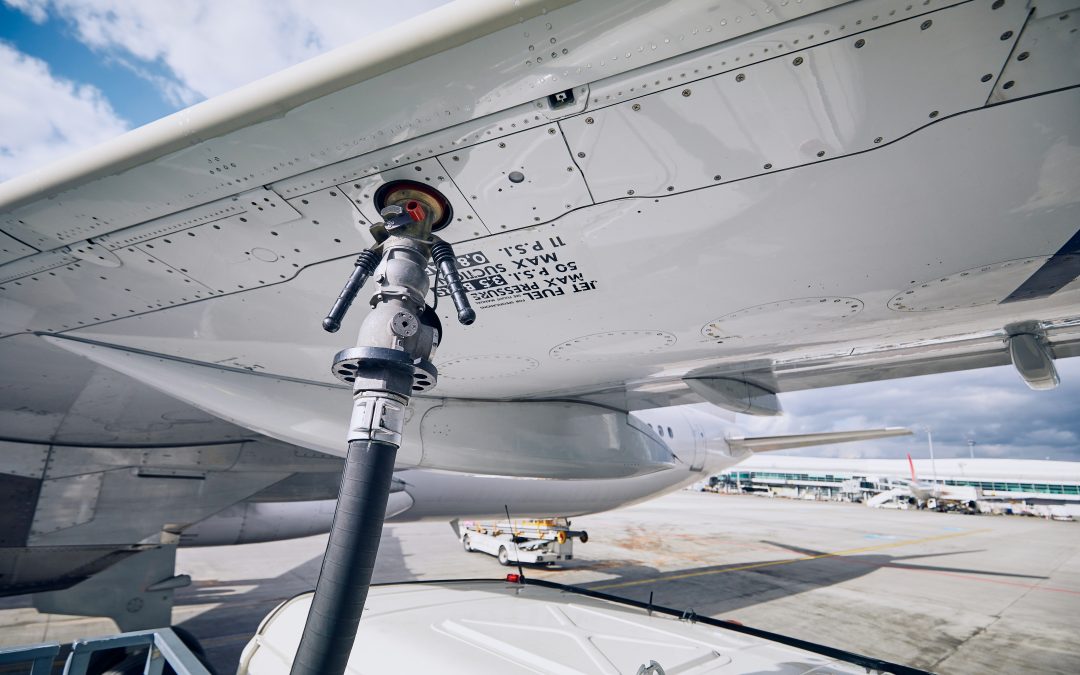Aviation fuel is used to power aircraft for propulsion. Modern aviation fuels are unique for their specific energy, or energy per unit mass. Aviation fuel’s high energy storage capability is what enables long-distance flights.
There are many types of aviation fuel with distinct uses, qualities, and specifications. While most of these fuels are fossil-based, new forms of sustainable fuel (such as biofuels and electric batteries) are being researched!
Aviation Fuel Types for General Use
There are two main types of aviation fuel used in general aviation: jet fuel and AVGAS.
Jet fuel is a refined kerosene-based, clear or straw-colored liquid that is primarily used to power turbine engines, such as turboprop and jet engines.
There are several types of jet fuel, with the main ones being:
- Jet A is primarily used in the United States. This fuel is developed to be heavier with a higher flash point and freezing point than standard kerosene.
- Jet A1 is the most used jet fuel worldwide. Jet A1 has a lower freezing point (-47° C) than Jet A (-40° C) so it is especially suitable for international travel through varying climates. This type of fuel also contains static dissipater additives that decrease static charges that form during movement. Despite the differences between Jet A and Jet A1, flight operators use both fuels interchangeably.
- Jet B is the most common alternative to the jet fuel and AVGAS, primarily used in civil aviation. Jet B has a uniquely low freezing point of -76° C, making it useful in extremely cold areas.
AVGAS (short for “aviation gasoline”) is used by traditional propellor aircraft and small piston-engine airplanes. Tasks that use AVGAS-based aircraft are typically on a smaller scale and include crop-dusting, private flying, and flight training.
AVGAS notably is still produced tetraethyl lead (TEL), which is a toxic additive used to prevent engine knocking. However, there are currently research studies and experiments aimed to reduce and eliminate the usage of TEL. G100UL, the first unleaded AVGAS (produced by General Electric), was FAA approved in mid-2021!
Emerging Aviation Fuel Types
Biofuels (also referred to as sustainable aviation fuel) are ecologically friendly alternatives to the conventional fossil-based fuels used in aviation. Sustainable aviation fuel development has been making strides in the industry-wide effort to achieve carbon neutrality by 2050. This new fuel type is notable for its similarity in efficiency to typical aviation fuel, as well as its ability to be almost-seamlessly dropped into existing fuel architecture. Industry leaders have pinpointed the drop-in nature of SAF as a way for the industry to pivot into other renewable or carbon-efficient types of aviation fuel.
As a greater emphasis on renewable energy is placed, general aviation may turn to hydrogen power and electric batteries for fueling systems. Aviation batteries in their current state are bulkier and more inefficient than fossil fuels, currently making the fuel type ideal for short-term flights and light cargo transportation. Companies like NASA and DHL have been researching battery-powered aircraft for various uses, such as low passenger count flights and regional cargo movement.
Natural gases have potential for widespread aviation use in the future as a short-to-mid-term solution to decarbonization. Many natural gas reservoirs remain untapped, and liquified natural gases emit 25-30% than conventional jet fuel.
Interested in learning more about aviation maintenance and pursuing it as a career? Fill out the form below and get connected with National Aviation Academy!

